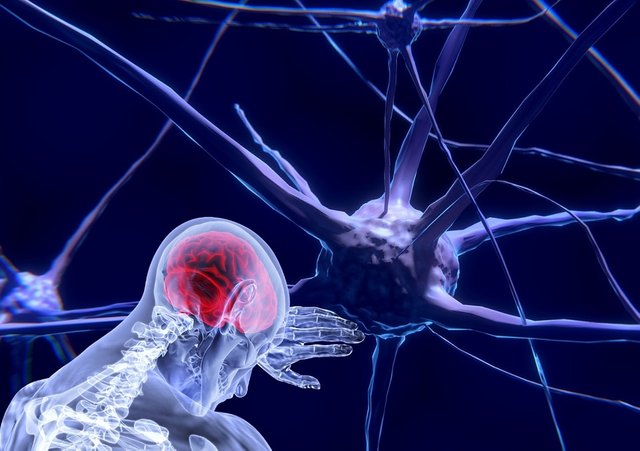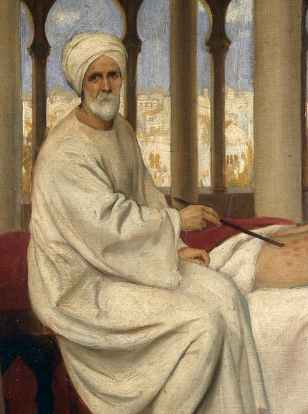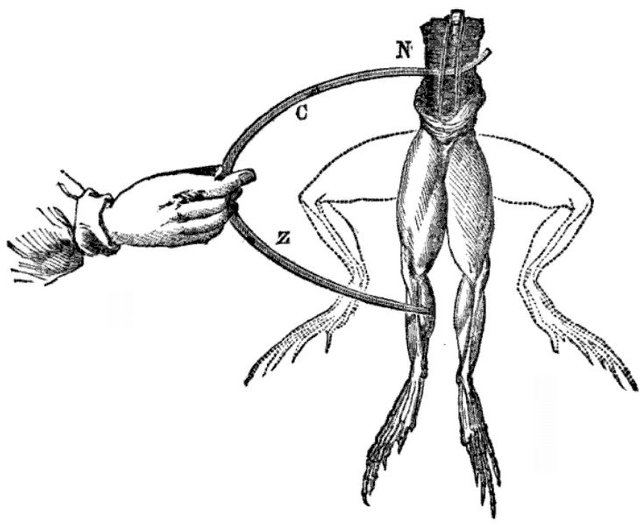Neuroscience Part-1
Neuroscience is a part of a group of disciplines in the study of the nervous system and, in most cases, it may be right to talk about neuroscience in multi-disciplinary studies and methods-including many disciplines.

image from, pixabay Author: Lotusbluete_ CC0 Licensed
These sciences are involved in molecular level research, which is entirely from the physical structure of the nervous system, which is called behavioral and cognitive, which is reflected in the attitude and actions of each person on the outside. Similarly, neuroscience is responsible for the development of drugs not only for the study of pathology but also to treat the disease related to the human brain.
What is neuroscience?
Neuroscience is the science, especially in the biology, that branch, which works on our nervous system. This branch is comprised of anatomy, biology, chemistry, philosophy, engineering, medicine, psychology etc. It is essential that our nerves in different parts of our body and their nervous circulation relationship with the brain. It can be said to be the fat of the science of our feeling.
Neuroscience Birth and Growth

Andreas Vesalius_Creative Commons Attribution 4.0 image, Wikimedia Commons
Along with the development of molecular biology and computers, the science-based study of neuroscience began in the second half of the twentieth century, but its practice was coming from many years ago. Although its footprint is found even before Christ's birth, it can not be taken at the same level of study or study, because then it was limited only to scattered thoughts and surgery. From the perspective of the main methodology of scientific research, the reason for this exploration began in the hands of Flemish physician Andreas Vesalius, and in a better way, he wrote the book 'On the Workings of Human Body'. But before that, let's turn a little more back.
Neuroscience in the ancient era: Heart versus the brain
Since ancient times, people were interested in conscious, unconscious, subconscious or memory, imagination, conscience, which are called biological science or behavioral science in the present age. The ancient Egyptians thought of where and where these sources are, the heart or heart is at the root of all these. It is also evidenced by the process of mummification.
At the time of making the mummy, they would have left the brain out of the head, but they tried to preserve the heart, in all respects. Greek philosopher Aristotle had similar misconceptions. He also thought that everything is in the heart of our heart, and the work of the brain is the need for blood-cooling.
But there is the opposite was the right way. The evidence of which is found in Edwin Smith's Papyrus in Egypt in 1700 BC. The description of 48 treatments in this papyrus can be found, out of which seven details are directly related to the brain. As it is understood, this time some people were also aware of the connection to the brain with different disorders.

Edwin Smith Papyrus_Creative Commons Attribution 4.0 image, Wikimedia Commons
Regardless of whoever, the physical activity of the heart, no one directly rejected this idea before the Greek physician Hippocrates. He believed that this brain is not only about feelings but also in the centers of human intellectualization. Herophilus, who was diagnosed with physiology, also believed that all the intellectuals of our cellar were from the brain. Plato was also a supporter of brain doctrine, but due to Aristotle's relatively favorable acceptance, Aristotle's opinion was going on for a long time. After a long time, it was refuted by the Roman doctor Gladen. Gladen was a doctor of gladiators. While treating Gladiators, he noticed that the head injury was mainly responsible for the events of the downfall of their mental state.
Pre-medieval and medieval: progress is ongoing
Later, around 1000 AD, renowned physician Abu al Qasim al-Jahraui (Abulacassis in Latin Translation) described the treatment of a significant number of neurological disorders in Al-Tasharif, in his 35th volume. In addition to al-Qasim, the contribution of physicians like Ibn Rushd, Ibn Sina, and Ibn Zuhr in the Muslim world of medieval history was noteworthy in the introduction of neuroscience.

Al-Zahrawi in the treatment of the patient_ Creative Commons Attribution 4.0 image, Wikimedia Commons
During the European Renaissance, scientists and physicians such as Vilnius, Rene Descartes, Thomas Willis, have set the path of this branch of science activities. In the book 'Anatomy of the Brain' published in 1664, Thomas Willis analyzed nervous functions such as epilepsy, paralysis, monogamy, and reflex. In this book, he first introduced the word nervous system. In the 1770s Franz Anton Mesmer invented a malfunction but effective method of treatment of an organically-unknown magnetism, from which the mammals were born later.
In 1791, Louisiana Gallavani, the scientist, suggested that our nerves work through electrical stimuli. Of course, there were two reasons: the sudden death of the frogs in the exposure of an electric cable, the signs of life and the other, the solution to the mysteries of power called Europe. The proposal further exposes the bioelectricity branch. It is not unusual to mention here that, at the time, another prominent scientist, Alessandro Volta, gave us the blessing of the battery, but this is another story.
Moving into the modern era: Neuroscience rises in the circulation and accumulation of electricity
This time we that know the circulation of nervous nerves is a neuron, we are clearly identified with this neuron, approximately 1837, by check physiologist Ian Evangelista Purkinje. In 1843, German physician Emil Du-Boa Raymond demonstrated the electrocardiogram of neural signals. Measure the speed of this circulation 6 years later, by another prominent German physicist Hermann von Helmholtz, in 1849.

Galvani discovered that frog's legs twitch when electricity is passed through the muscles_ Creative Commons Attribution 4.0 image, Wikimedia Commons
At this stage, the study of neuroscience was introduced as a specific branch of biology, and in 1862, Paul Brocka took a step forward by identifying the essential part of the brain for our conversations, a very important step.
In 1873, by the hand of the Italian scientist Camilo Goose we see the real magnificent image of the first neuron. And using his technique, Santiago Ramon e Kahal proposed that our nervous system is comprised of many distinct units and neurons are the main components of the brain in many nervous policies. For this, in 1906, Golji and Kahal received simultaneous Nobel Prizes. Of course, in 1878, Scottish surgeon William McEuen set up a milestone in the neural cut-off of successful brain removal by successfully removing a brain.
Through all these, neuroscience was established in the early twentieth century as a special branch of science from a part of the nervous system, which became full of David Rakh, the hands of Francis Schmidt. In the '50s, Rick, under the Defense Ministry, included Walter Reed Army Institute of Research, which included psychiatry research with early physiological research. At the same time, Schmidt also listed neurological research in MIT biological section. And progressing at a fast pace is a science-based study of the nervous system, which is what is followed by a revolutionary change in the treatment of brain disease.
References for further reading about this

Thanks for reading this post, hope you liked this post. If you want you can leave me your thoughts or opinions in the comments sections. Have a beautiful day.
✯ Follow @littlemix for more ✯

All above the images which used in this post, they are free for commercial use and royalty free. The original links of images I also provided under them

gif by @foundation
Congratulations @littlemix! You have completed the following achievement on the Steem blockchain and have been rewarded with new badge(s) :
Click here to view your Board
If you no longer want to receive notifications, reply to this comment with the word
STOPTo support your work, I also upvoted your post!
Congratulations! This post has been upvoted from the communal account, @minnowsupport, by Littlemix from the Minnow Support Project. It's a witness project run by aggroed, ausbitbank, teamsteem, someguy123, neoxian, followbtcnews, and netuoso. The goal is to help Steemit grow by supporting Minnows. Please find us at the Peace, Abundance, and Liberty Network (PALnet) Discord Channel. It's a completely public and open space to all members of the Steemit community who voluntarily choose to be there.
If you would like to delegate to the Minnow Support Project you can do so by clicking on the following links: 50SP, 100SP, 250SP, 500SP, 1000SP, 5000SP.
Be sure to leave at least 50SP undelegated on your account.
This post has been voted on by the SteemSTEM curation team and voting trail in collaboration with @curie.
If you appreciate the work we are doing then consider voting both projects for witness by selecting stem.witness and curie!
For additional information please join us on the SteemSTEM discord and to get to know the rest of the community!
I think I left almost the same comment in another post today, but I really enjoy reading about the history of science in general (especially when it comes to the 'beliefs' strongly established within the more ancient cultures. Thanks for your post!
@onepagex
This post has received a free upvote by @OnePageX
This bot is sponsored by OnePageX.com! To use it, simply reply to your post with @onepagex and you will get an upvote!
OnePageX.com is the simplest cryptocurrency conversion tool online!